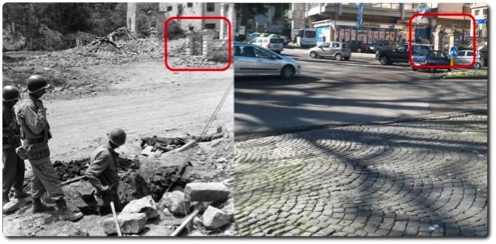 Among the historical events that have most left their mark on the collective culture of many generations there are, without a doubt, the two World Wars which, with their own violence, exerted their influence on all the arts, from music to poetry. from cinema to prose. There are many verses written in memory of the soldiers who, having left for the front, never returned to their loved ones, lost in trenches and makeshift burials. But on May 5, 2015 in Velletri, a populous municipality in the Castelli Romani, the body of one of them, missing for at least 70 years, was recovered and brought back home thanks to the success achieved by a search by the archaeologists of the Alaris of Grottaferrata and of the Archeogeos of Rocca di Papa in which the National Institute of Geophysics and Volcanology (INGV) participated by carrying out geophysical surveys.
Among the historical events that have most left their mark on the collective culture of many generations there are, without a doubt, the two World Wars which, with their own violence, exerted their influence on all the arts, from music to poetry. from cinema to prose. There are many verses written in memory of the soldiers who, having left for the front, never returned to their loved ones, lost in trenches and makeshift burials. But on May 5, 2015 in Velletri, a populous municipality in the Castelli Romani, the body of one of them, missing for at least 70 years, was recovered and brought back home thanks to the success achieved by a search by the archaeologists of the Alaris of Grottaferrata and of the Archeogeos of Rocca di Papa in which the National Institute of Geophysics and Volcanology (INGV) participated by carrying out geophysical surveys.
We talked about it with Stefano Urbini, an INGV researcher who participated in the field surveys.
What operating methods are adopted in the search for the bodies of soldiers missing in the Second World War and what role did INGV participate in these searches?
Usually, when carrying out a delicate search such as that of the body of someone missing in war, the first elements to be analyzed are historical documents, texts and photographs dedicated to the clashes that took place in the war zone. Also in this case we started from there, with an association that deals with tracing the German soldiers missing in action that came across some photographs from the volume "The battle of Velletri" by Paolo Carotenuto in which, in particular, they see American soldiers burying the remains of a German soldier. INGV comes into play here, when in order to minimize the extent of the excavation, which today is in the middle of the urban area, it was decided to proceed with a detailed survey using a non-invasive investigation technique: the GPR technique (Ground Penetrating Radar ).
In this regard, how do these excavations reconcile with the current urban fabric of our cities?
It is undoubtedly complex, since today many service structures coexist under the road surface (in the case of the excavation of Velletri, they were under the very central Piazza Garibaldi): from sewers to pipes to power lines. For this reason, where possible, minimally invasive investigations are always opted for, starting with a meticulous work of narrowing the field and accurately estimating the burial site. In 2015 in Velletri, INGV used an antenna capable of scanning the first few meters under the pavement with high resolution, obtaining 250 m of radar profiles, for a total of 25.000 traces acquired in just one small rectangle of pavement (6x9 m2).
What exactly are GPR data analytics?
These are analyzes based on the identification of the "return echoes" which are produced when passing between materials characterized by different electromagnetic properties (dielectric constant). The greater the contrast between the media crossed by the electromagnetic wave generated by the antenna, the greater the intensity of the echo produced.
What were the characteristics of the signal that caught your attention?
In our case, unfortunately, an excavation filled with the same excavated material generated a very weak contrast, while the presence of the metal service pipes generated, in turn, very intense echoes, effectively disturbing the reading of the weak signals. Fortunately, however, the signal sought had to have very specific characteristics: to be of weak intensity and compatible in shape and size with the hole observed in the photographs, to be no less than half a meter and no more than one meter deep, no less than 50 meters wide and no more than 80 centimeters and between 1,5 and 2 meters in length. After an impressive work spent on each individual profile, our attention was captured by a small agglomeration of anomalies that largely responded to the search criteria set. Thus, on the basis of the information provided by us, on 5 May 2015 the body of that German soldier was finally recovered and, after 70 years, he was able to return home.
In the picture: comparison between vintage images (taken from “The battle of Velletri”, Omnimedia publisher) and modern images of Piazza Garibaldi in Velletri. In the red box the common points. Source: INGV Environment blog



